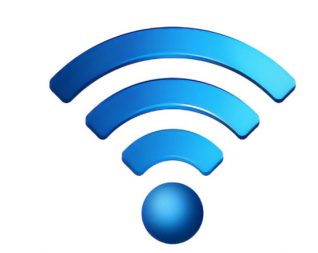 Many Canadians use a tablet as their device of choice to access the internet. A tablet is a relatively new device that acts and works very similarly to portable computer. With both devices you can access email and the internet. However, a table is usually easier to use, more compact, and lighter to hold than a computer. You can also more easily access some internet services using apps, download apps to play games, and conveniently open apps to do most things you would want to do including watch videos, listen to music, read a book, take pictures, and communicate with your family and friends through video chats and messages. There are many factors to consider when purchasing a tablet and we’ll discuss some of those to help you make the choice that right for your life including knowledge level, budget, what you are looking to do on your device, screen size, battery life and more.
Many Canadians use a tablet as their device of choice to access the internet. A tablet is a relatively new device that acts and works very similarly to portable computer. With both devices you can access email and the internet. However, a table is usually easier to use, more compact, and lighter to hold than a computer. You can also more easily access some internet services using apps, download apps to play games, and conveniently open apps to do most things you would want to do including watch videos, listen to music, read a book, take pictures, and communicate with your family and friends through video chats and messages. There are many factors to consider when purchasing a tablet and we’ll discuss some of those to help you make the choice that right for your life including knowledge level, budget, what you are looking to do on your device, screen size, battery life and more.

Before you buy a tablet
Do you have access to the internet?
There are a couple of elements required to get started online. The most important is the access to internet. Access to internet is commonplace for many Canadians with nearly all under the age of 45 using the internet every day.1 It is not just the young people on the internet, access to internet for older adults are increasing rapidly. From 2013 to 2016, internet use increased the most from 65% to 81% for those aged 65 to 74 year old, and 35% to 50% for those aged 75 and older.2 Access to Internet can connect us to the rest of the world and support in reshaping in how we work, research information, spend our free time and consume goods. It can also make our lives more convenient in many ways.
Though internet may seem ubiquitous, internet access it not available in all areas of Canada; many northern or rural areas of the country still do not have internet. Recognizing this gap in connectivity, Canada as a country is working on a strategy to bring improve access and speed of internet to all.3
 Tablets connect to the Internet in two ways. The first is on a wireless connection in your home, commonly known as Wi-Fi. Wi-Fi is a wireless networking technology that will allow devices like tablets, computers, smart phones and other equipment like printers to access the Internet. Wi-Fi is not necessary for tablets to function but without Wi-Fi, you will not be connected to the internet and what you can do on the tablet will be limited. You’ll need a router for home Wi-Fi and we have an article to help you understand more about routers and how they factor into your home internet connectivity.
Tablets connect to the Internet in two ways. The first is on a wireless connection in your home, commonly known as Wi-Fi. Wi-Fi is a wireless networking technology that will allow devices like tablets, computers, smart phones and other equipment like printers to access the Internet. Wi-Fi is not necessary for tablets to function but without Wi-Fi, you will not be connected to the internet and what you can do on the tablet will be limited. You’ll need a router for home Wi-Fi and we have an article to help you understand more about routers and how they factor into your home internet connectivity.
Secondly, tablets can connect to the Internet through a data plan from a telecommunications provider (like a smartphone). Some tablets have cellular functionality built-in enabling them to connect to the Internet when Wi-Fi is not available. Before purchasing a tablet, decide whether Wi-Fi or WiFi+Cellular options work better for your life. If you choose a Wi-Fi only tablet, but have limited access to internet at home, seek out areas of your community (community centres, libraries, etc) where internet may be freely available.
What kind of tablet is right for you?
Tablets come in a variety of sizes, colours, and price ranges. So think about what you would like to use your tablet for. Are you interested in using it to take photos? To chat with your daughter or son? To play games? To browse the internet? Based on your needs, the best tablet will differ.
Some people want to be able to old it for long periods of time, like for watching a movie, or carrying on a long conversation. They would likely select one that is light, slim, and not more than about ten inches in size (to keep the weight down). The screen is still large enough to enjoy a great image but the whole thing isn’t so cumbersome to cause fatigue quickly.
Another important factor to consider is the operating system your family is using. You may have heard of iOS (found on Apple iPads) and Android operating systems (found on a wide range of manufacturers tablets). Operating systems will determine both the hardware and software available on the devices. iOS or Android operating systems have a slightly different look and feel but retain many of the same functionalities.
Choosing a tablet that has the same operating system that your family uses may offer several advantages. One of these is it could make connecting with family on certain applications easier. For example, Apple devices have an App called FaceTime that will enables quick and easy video communication with others using FaceTime. Another advantage of keeping to the same operating system is that if your family will more easily be able to suggest new applications to load onto your tablet that you will enjoy. Of course, they’ll also be more able to help with any maintenance or connection difficulties you encounter over time.
Understanding the Product Title
As you begin to look at tablets options online, you will come across many options to consider including: colours, sizes, how much memory is included, etc. We call these configurations. Many of these are included in the product title like this:
Samsung Galaxy Tab A 10.1″ 32GB Android Tablet – Black

What does this mean?
Samsung is this the name of the brand of the product and the name of the product is called Galaxy Tab A. The number 10.1” refers to the screen size. Much like a TV, the screen size for this product is measured on the diagonal corner. As stated above, think about what size you will feel comfortable using for prolonged periods.
The storage capacity of the tablet is represented in GB (gigabyte). Common storage capacities are 16, 32, 64 and 128GB. Everything you load onto the tablet will use up some of the storage: photos and videos use the most! The higher GB in a product, the more storage capacity and possibly the higher the cost of the product. Android refers to the operating system. You may be familiar with Windows, from Microsoft. Android is a standard type of operating system used by many tablet brands. At the end of the product title is usually the colour of the product. Tablets come in a variety colours, from black and white, to silver, blue, pink, or green.
On a website, you can learn more about the device by clicking on a tab that can show you more information. There are also tabs you can click to better understand Details and Specs and what’s included as part of the product (e.g. cables, adapter etc.).

Making a Decision
Now that you understand how useful the title of a tablet is to your decision you can start to choose the features that are right for you. Return to the question of, “What do I want to do with my tablet?” If you are looking to complete basic functions, such as checking the weather, email or connecting with friends, a low storage capacity maybe all you need. If you are looking to use your tablet for reading or using multiple apps, and especially if you want to take lots of photos or store videos on it, than you will likely want more storage; 64GB or 128GB might be more suitable for you. Also, if you are going to watch lots of movies you might select a larger screen to get a more cinematic experience.
People who are simply looking for a general purpose device that’s easy to use often gravitate towards Apple’s iPads. When affordability is most important, then a lost cost option like an Amazon Fire Tablet may be the best choice. Determining what you would like to use your tablet for, and your budget can help you narrow down your options.
Technology has enabled so many positive advancements in our modern world, and in today’s climate, we rely on technology for many aspects of our lives like staying connected with family, and friends. Tablets are easy to use and it can unlock a world of opportunities for older adults as they gradually familiarize themselves with technology and internet. They are a fantastic entry point for older adults to have modern conveniences at their fingertips.
1 The Internet and Digital Technology. https://www150.statcan.gc.ca/n1/en/pub/11-627-m/11-627-m2017032-eng.pdf?st=UzckuFAu
2 Life in the Fast Lane. How are Canadians Managing. https://www150.statcan.gc.ca/n1/daily-quotidien/171114/dq171114a-eng.htm?HPA=1
https://www.mayoclinic.org/healthy-lifestyle/fitness/in-depth/exercise/art-20048389
3 High Speed for All: Canada’s Connectivity Strategy. https://www.ic.gc.ca/eic/site/139.nsf/eng/h_00002.html



